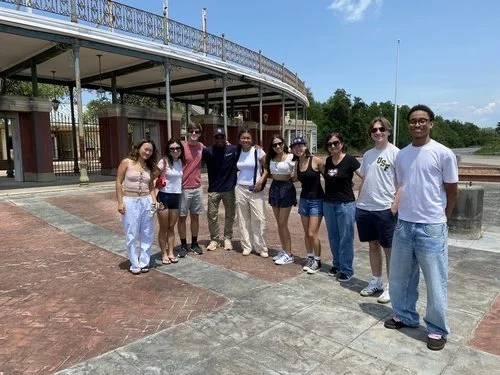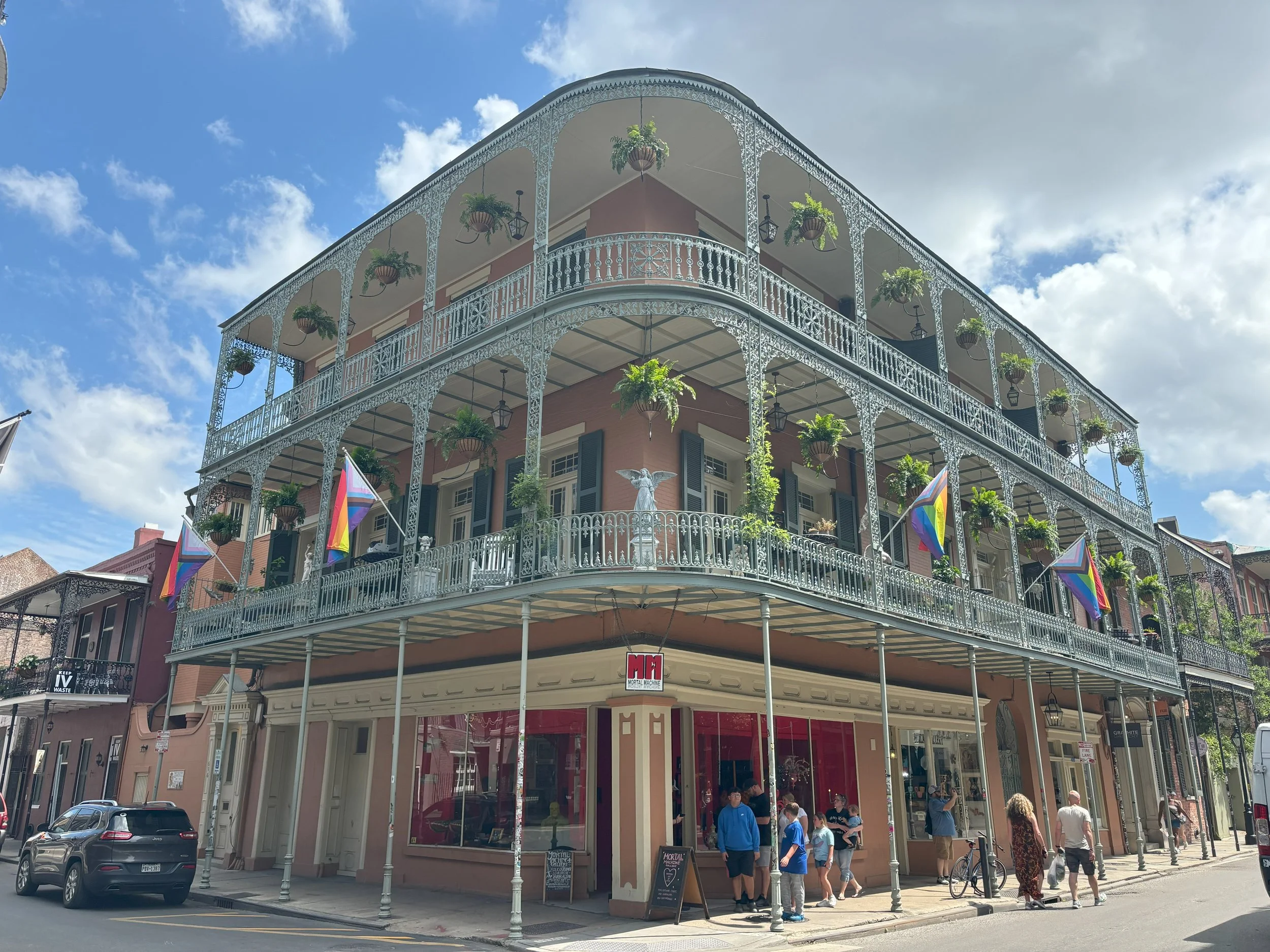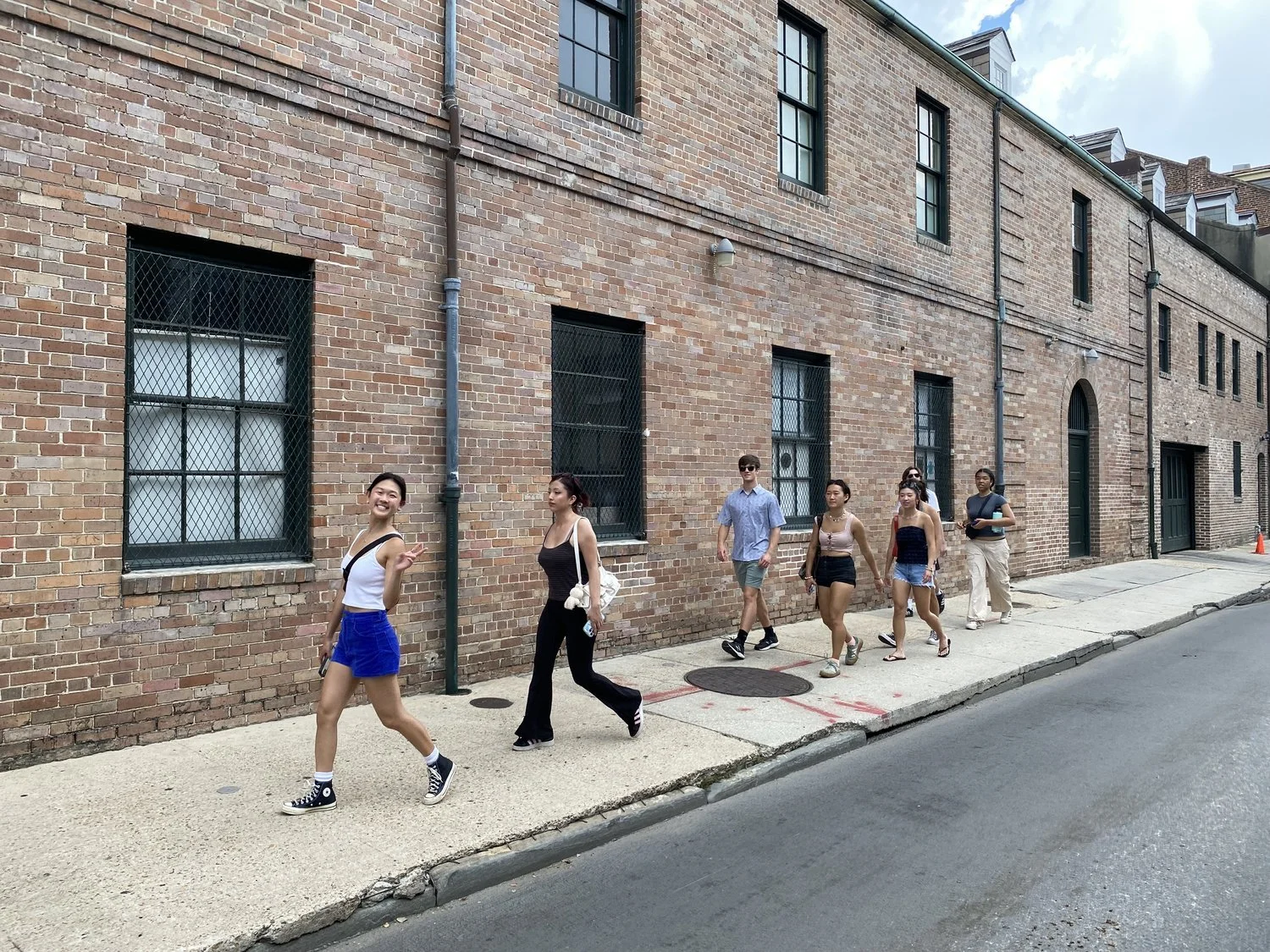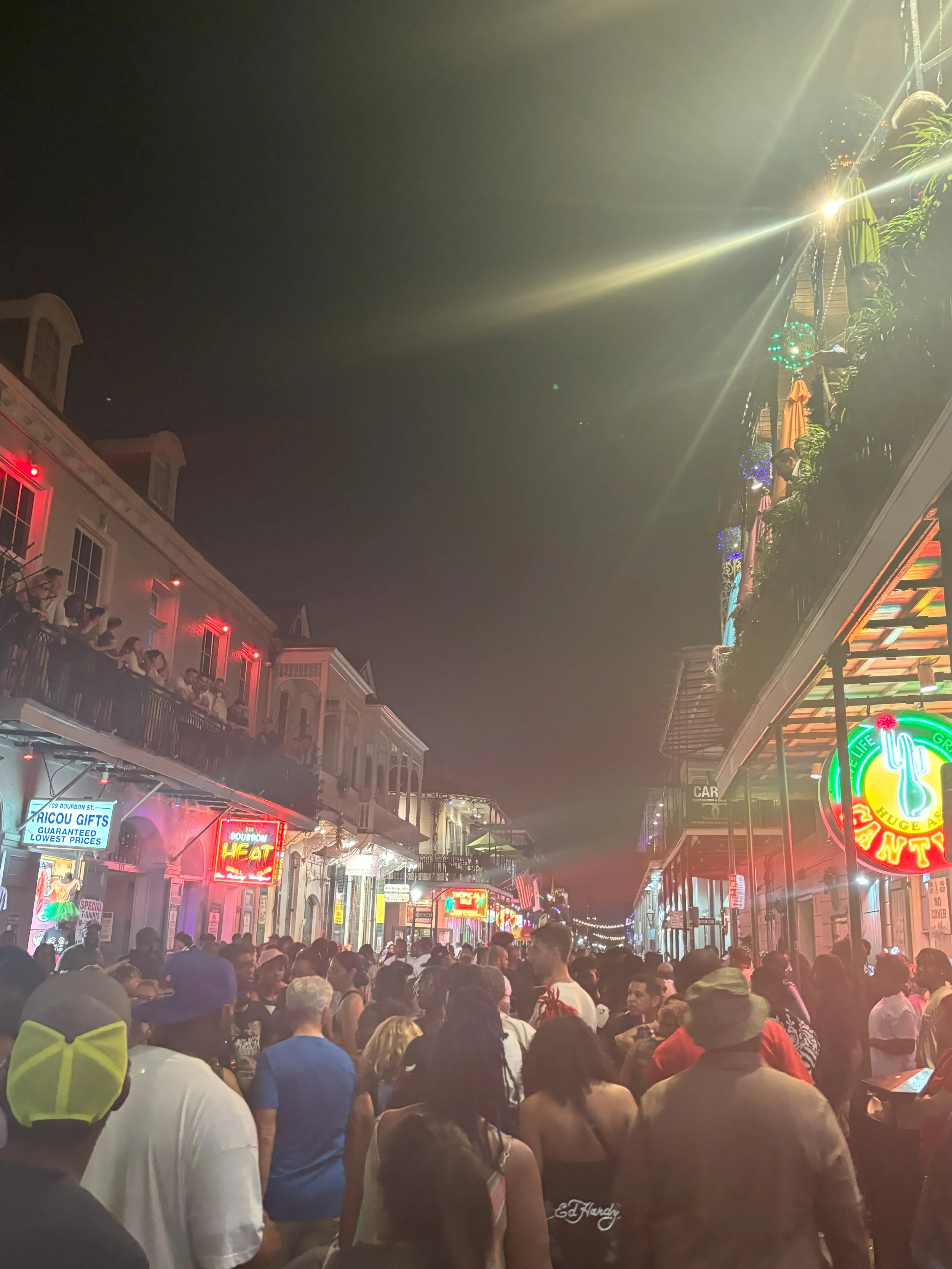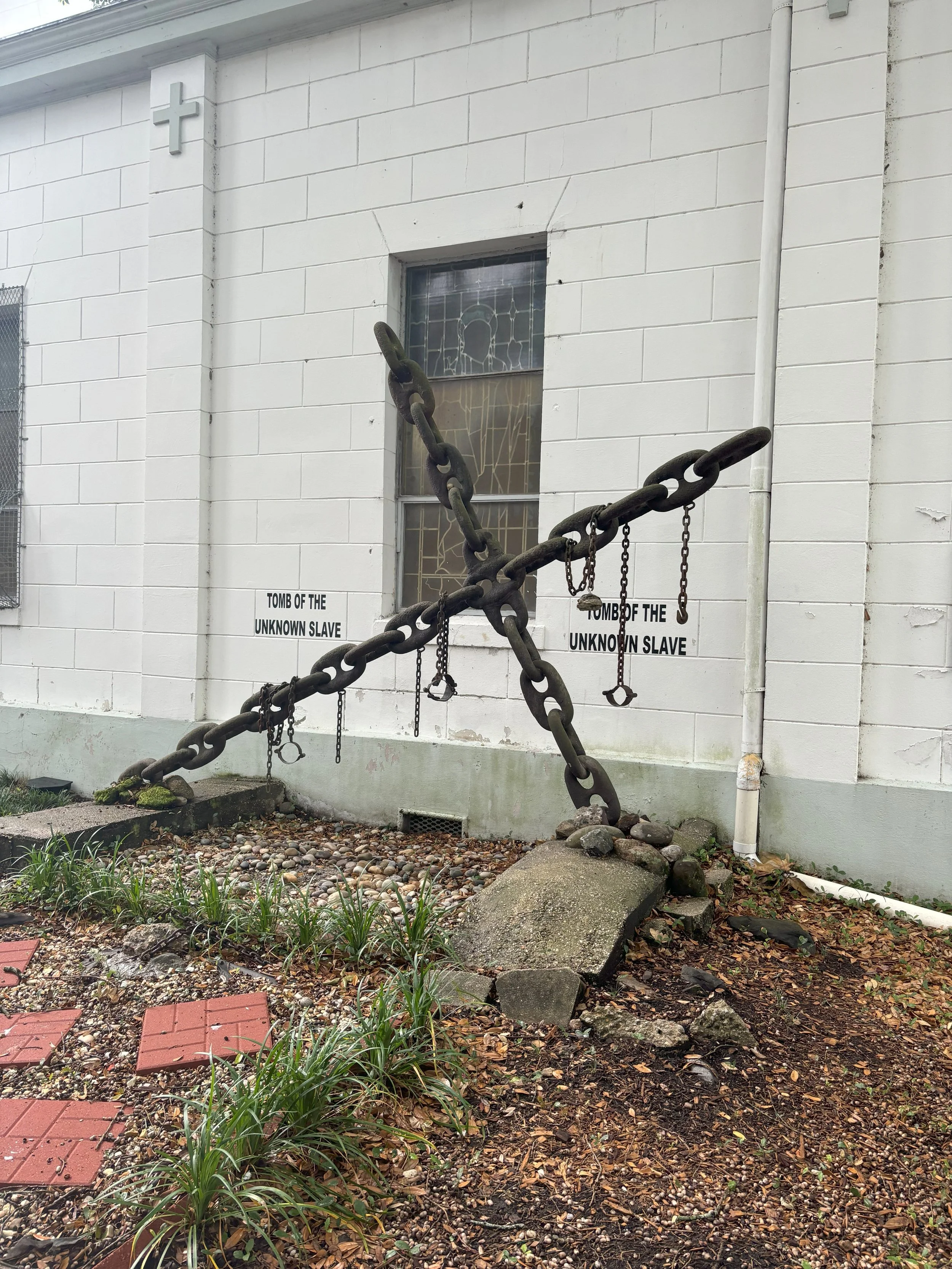It is currently 5AM, and Thalia and I have just made our way to the MSY airport. The early morning and heavy suitcases all feel familiar. As in, our travels to New Orleans just one month ago. But this experience feels different. Instead of arriving with intense anxiety, I am leaving with a heart full of gratitude. This past month has been an amazing experience.
I am sitting at my gate writing this blog with the same Angel Food Smoothie I had on arrival. It feels strange to be back in this airport to return back to California. My flight takes off in three hours. There is really nothing I can do except fester in my own thoughts. And really, there are a lot of thoughts circling in my mind right now. When I first accepted this Maymester, I had no idea what to expect. I could not have envisioned the impact it was going to have on me. This experience has not only given me memories, but also has encouraged me to look at the world around me in new perspectives.
Over the past week, I have found myself reflecting about where I come from. I grew up in Redondo Beach, California, which is a beach suburb in Los Angeles county. This city is a place of comfort, safety, and opportunity. I think it is easy to take places of origin for granted, but my time in New Orleans has reminded me just how lucky I am. How lucky am I that my parents sacrificed everything to immigrate to another country for a better life. Every opportunity I have in my life is a direct result of their resilience.
These thoughts have been running through my brain during this past week in New Orleans. This lingering feeling became especially evident whilst having a cooking class and dinner with Maria Vieages. Chef Maria Vieages was born and raised in Louisiana. She earned a degree in radiology, which then eventually turned into a chef career after her hospital coworkers recognized her cooking talents. She built her culinary career doing pop-ups, but like so many others, her life was uprooted by Hurricane Katrina. A client in California asked her to move out to Sonoma County following the disaster. She made a living there for over 13 years, working for major clients like Jeff Bezos and catering for companies like Cards Against Humanity. Maria has recently moved back to Louisiana where she now does cooking classes and New Orleans style pop-up shops. While the class was intriguing, I found her vulnerability most admirable during our time with her. She shared the hard truths about the devastations of Katrina, and how she lost everything alongside the difficulties of watching her own community suffer.
What struck me most was her contrasts between California and Louisiana. She expressed how California, with all its wealth, has been able to rebuild itself after disasters more effectively and efficiently. Meanwhile, communities in Louisiana are still struggling to recover from their 2005 hurricane. She discussed the lack of investment into critical infrastructure by the government, and how they still continue to neglect the systems meant to protect their vulnerable neighborhoods. Many people were displaced, with no means to return home. And that is when it hit me: how lucky I am.
I am grateful to have been raised in place with resources and a political will to protect its people. I thought about how I was raised with this inherent belief that stability is guaranteed, when in reality, it is not. My parents’ sacrifices allowed me to grow up in a community where economic recovery is possible, and where people’s voices are more likely to be heard. Listening to Maria, I felt the weight of this privilege. But, I also feel inspired by her grit in the face of adversity. Her story reminded me that gratitude is not passive, rather it should drive us to pay more attention to the people around us.
While California holds its many advantages, Maria also pointed out that the state lacks this one quality: human touch. Despite its size and countless people, there can often be a noticeable disconnect amongst communities. A sense of one collective identity can be difficult to find in California. However, in New Orleans, shared values of community is what closely ties its people together. The people are what makes this city so special. There is a deep love here for one another.
This has made me reflect on the pain and tensions surging throughout Los Angeles, and across the country. For a country that is so richly diverse, we truly struggle to embrace this aspect as a strength of our nation. We talk about unity, yet remain intensely divided. This is why I love New Orleans. It feels like a bubble of love, where diversity and differences are celebrated. There is a collective identity here, and an unspoken pride about their home. New Orleans has an ability to accept every visitor that provides a true sense of belonging. As expressed by friend Evan from Louisiana: “You’ll find there is nothing else quite like New Orleans”. And he is right, there really is no place like here.


























